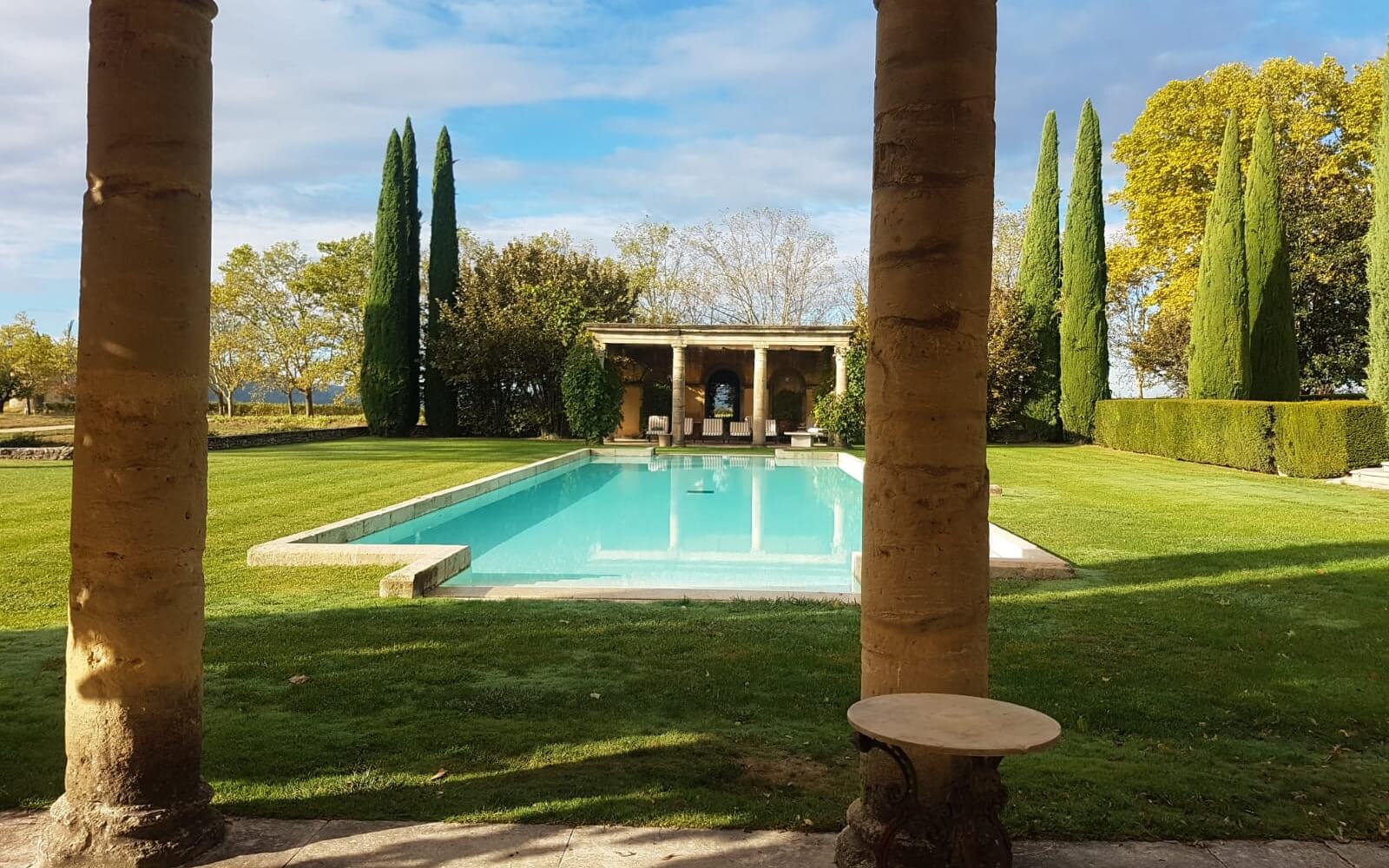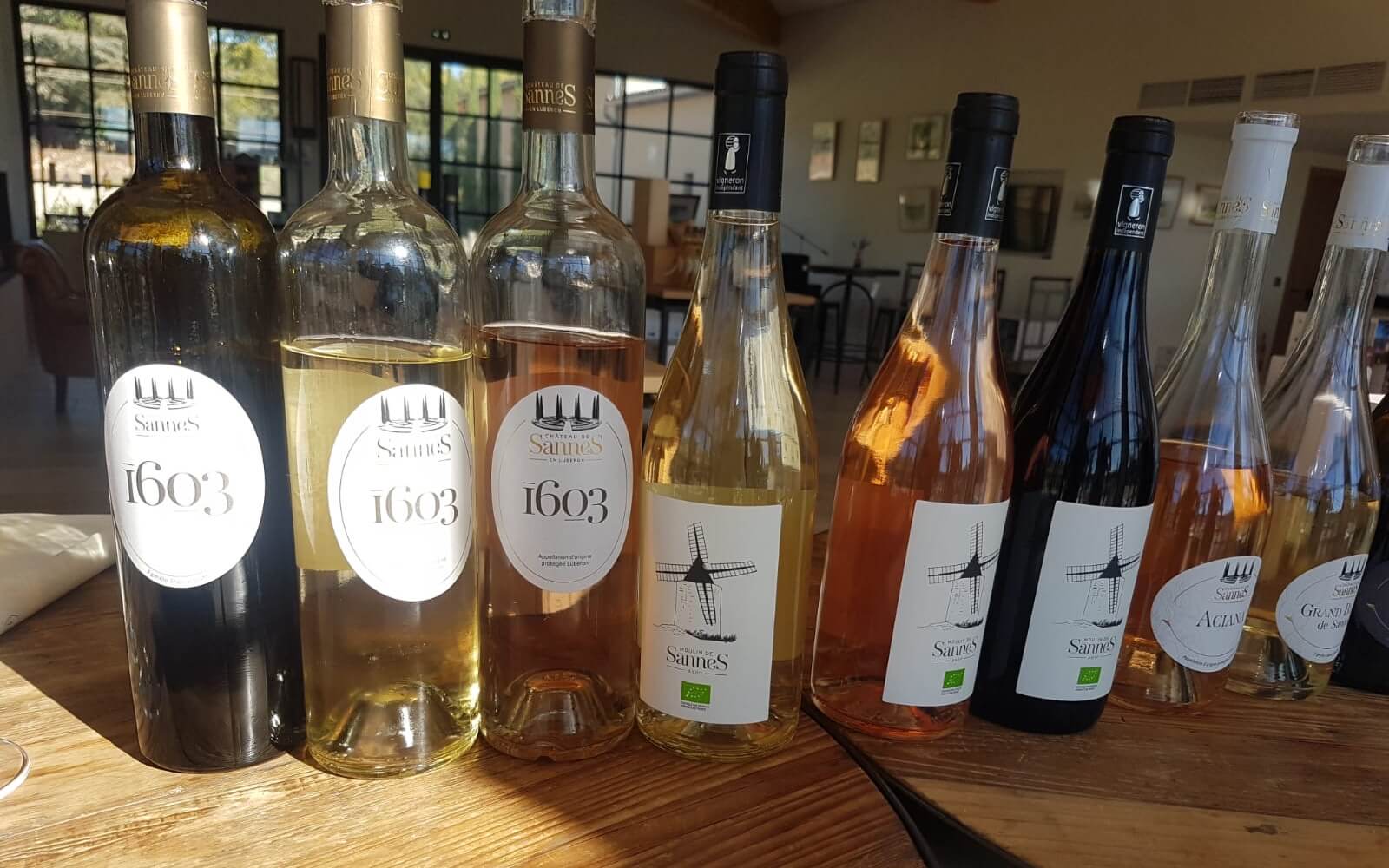Last October I was in a car heading south from my holiday cottage in Bonnieux in Provence, on my way through the mountains to the Luberon, where I had scheduled a visit to an wine domaine that had contacted me several weeks prior.
The life of a wine merchant can sometimes mean that holidays (much to my wife’s sometime raised eyebrow) are spent visiting wineries and estates around the World, often with the promise of a decent lunch if we can just ‘pop’ in as we are passing…
Chateau de Sannes can be found around 45km north of Aix-en-Provence, sitting on slightly raised plateau in the Luberon valley. The chateau itself dates from 1603 and for many years was the home and estate of Jean de Thibaud de Tisati, an advisor to the French King, with his son, Melchior, adding a chapel in 1661 and ornate gardens thereafter. The layout has barely changed since then. Pierre Gattaz bought the estate in the early 2000’s and has since refurbished all aspects of the Chateau, winery and vineyards, with a new Chais opening in May 2020.
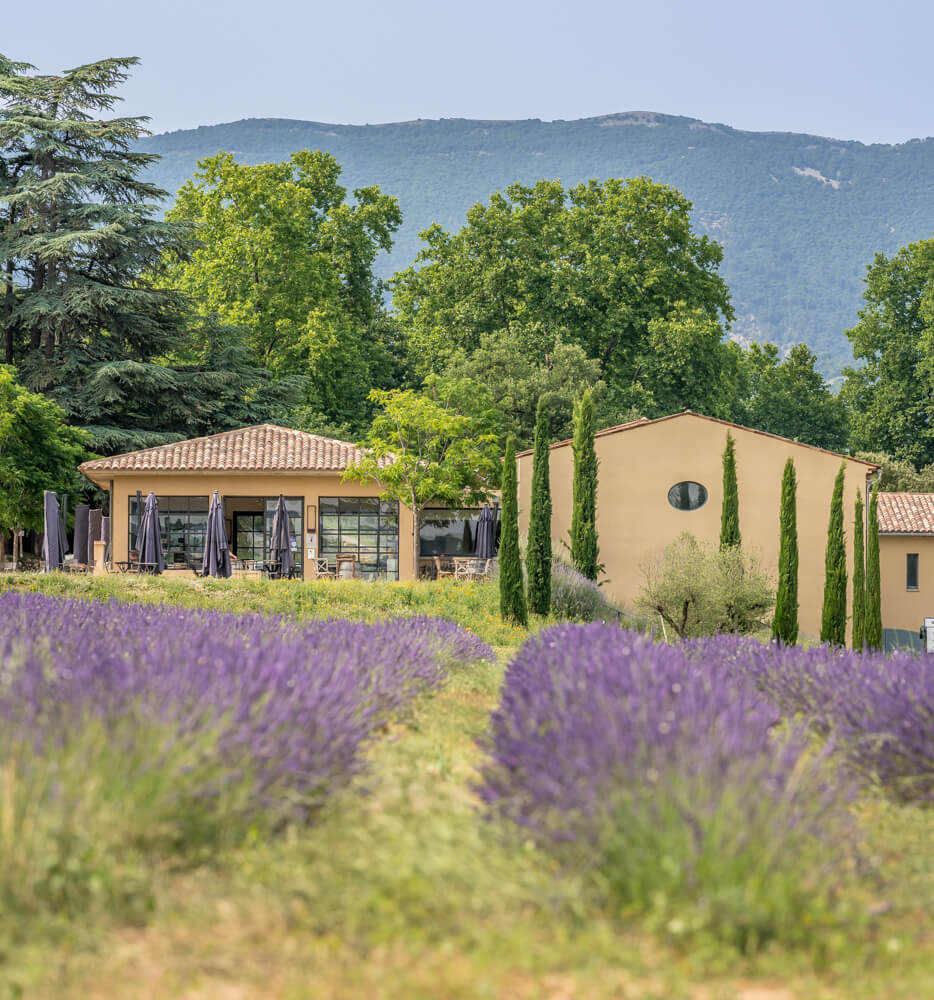
As you drive up, the first thing you see is the new glass, aluminium and cedarwood Cellar Door and winery, remote from the Chateau, and a great place to start the visit. Met by Erwan Thill, their sales director, we started our visit by walking toward the chateau through the beautiful gardens. Paths lined by tall cyprus, clipped lawns, ornamental box hedges and azure pools and ponds, laid out like a miniature Versailles, and all bathed in the glorious piercing light and warmth of an autumnal Provence sun. The chateau itself is stunning with warm pale honey stonework, manicured gardens, and tall trees that shade the paths that wind around the grounds. The vineyards surround the estate, falling away in gentle slopes to ponds, reservoirs and shady plantations. Wildlife abounds here, encouraged by the estate. On the flat lawn beside the Chateau, a large pavilion was erected, and Erwan explained that the house is often booked weeks in advance for weddings, large gatherings, house parties etc. (when I win the lottery, I will be first on the phone to book it ...)
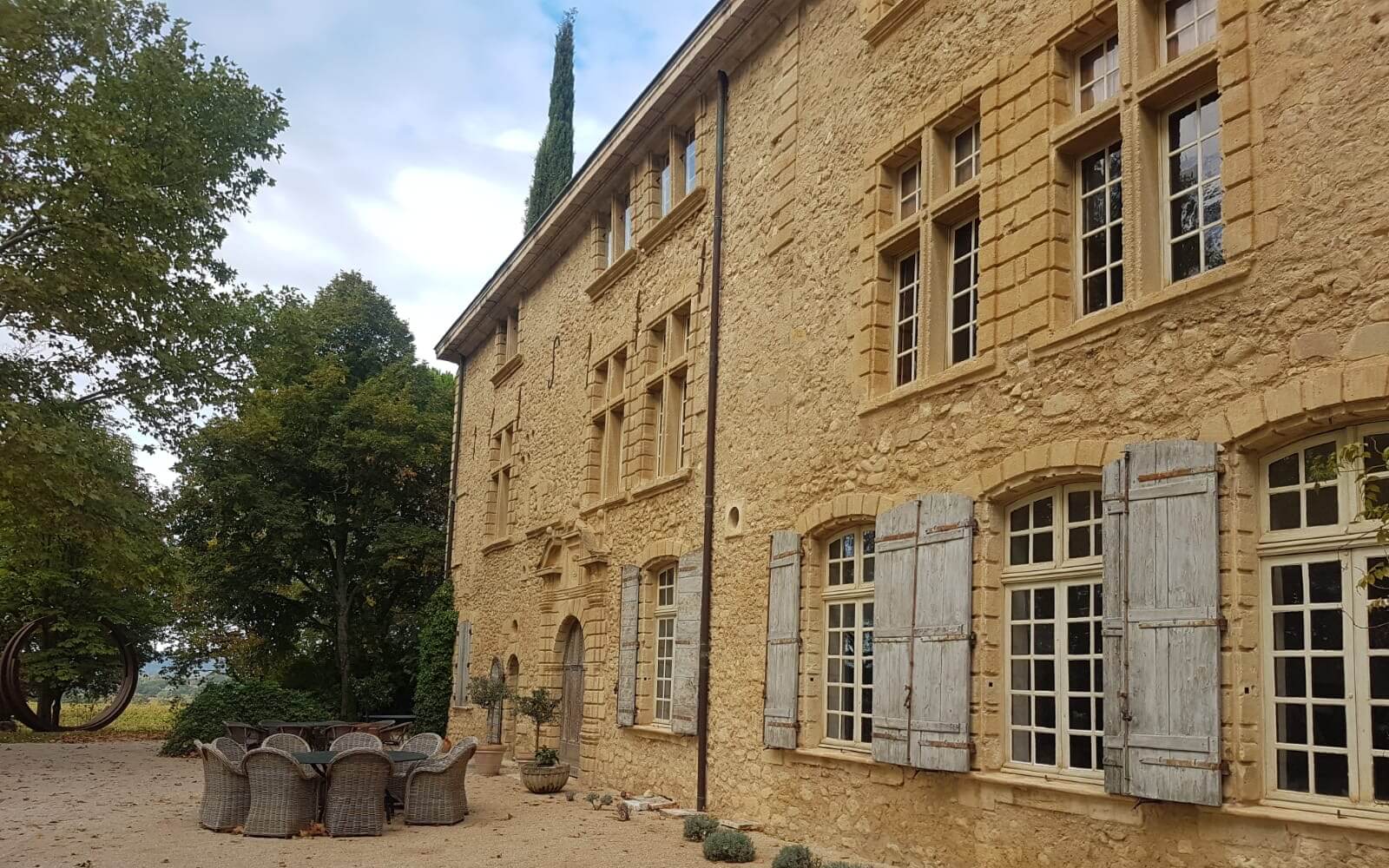
Chateau de Sannes consists of 70 hectares lying between 300-400m above sea level, with just 35 hectares of sustainably farmed vineyards planted around the chateau. This is very much a cool Mediterranean climate, in some case bordering on Alpine, ideal for growing aromatic grapes varieties and making wines that have a real sense of place and freshness. The soils are a unique mix of clay and marl, heavy in fragmented limestone scree from the nearby slopes and mountains. The main varieties are Syrah and Grenache Nori with some old vine Carignan for the reds, whilst the whites are a blend of Grenache Blanc, Rolle (Vermentino) and Ugni Blanc – all grown to retain freshness and vivacity and zest.
The winemaking is very hands off. The grapes are picked in the early hours by a combination of machine and manual, with sorting in the vineyards and at the winery prior to de-stemming; the reds are crushed and fermented in tank at a warmer temperature initially, with auto pumpovers for the first few days, before sending some to barrel for fermenting through, whilst a proportion is retained in tank and the ferment then gets cooler. Minimal chemical intervention is used throughout both winery and vineyards.
The whites, like the reds, are picked in the early part of the day, sorted, de-stemmed, pressed and the clear juice chilled before fermenting in tank at a controlled, cooler temperature, with a proportion seeing time in used oak barriques to add weight and structure.
The Chateau de Sannes range shows a real pyramidal hierarchy.
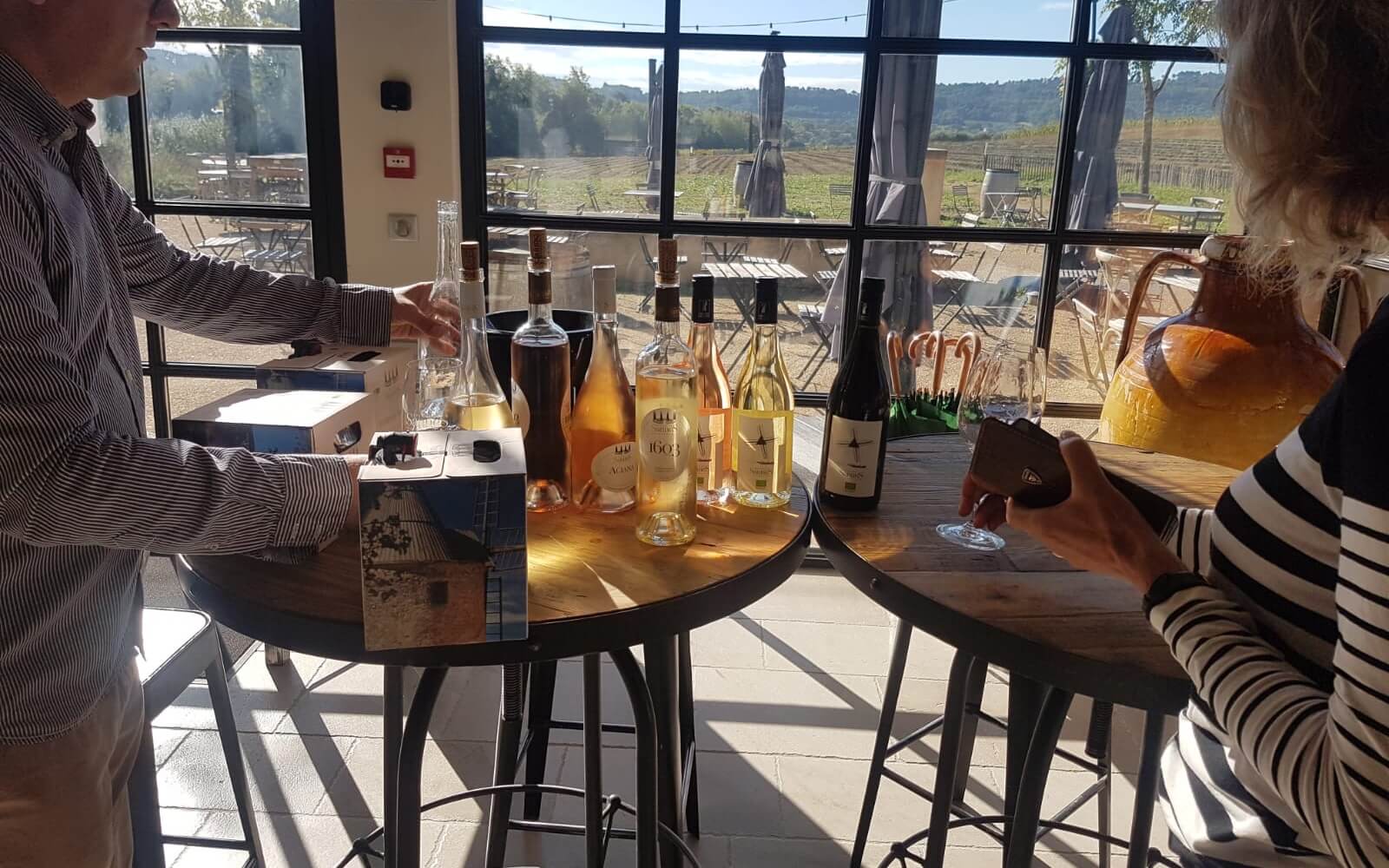
The 1603 range is described as their entry level, but in reality this is pretty far up anyone’s appreciating scale. The red and white 1603 wines are impressive in their own right. The white is a blend of Ugni, Vermentino and Grenache Blanc, with little oak added. It is crisp, steely and flavoursome, rounded and floral with peach and herbal overtones. The Red 1603 is Grenache Noir with some Syrah. Dark, rich and yet elegant with cherries, smoked coffee and some liquorice notes.
Up from the 1603 range is Aciana, a rosé of deeply intense and elegant freshness. Very pale in colour, beautiful bottle and a lovely balance and ‘lift’ of wild strawberry notes and some spice.
Upwards in the range is Grand Blancs de Sannes – a dry and richly impressive white, made with equal amounts of Ugni, Vermentino and Grenache Blanc, first pressing only used, 25% fermented in used oak of 250-500lit capacity, with 2 months in used oak with weekly batonnage, followed by 8 months in closed tank before blending and bottling. This is like top white Burgundy meets crisp and mineral-led Vermentino and White Chateauneuf all rolled into one.
To match the Grand Blancs there is a matching upper red – The Terre de Sannes. A rich, smoky, dense and full bodied complex wine made from 80% Syrah and 20% Grenache Noir, fermented on skins with wild yeast at a warm 28C with twice daily pigeage (Pumpovers), then aged 2 months in cuvee Beton, followed by 12 months in 225lt Oak, and only a minor filtration prior to bottling. In style this is more Northern Rhone than south, smoky, purple-staining colour and impressive structure. Deep and opulent.
The top of the range is the Castini, named after the founder. The white is made from selected lots of 50% each Ugni and Vermentino, fermented in tank, Acacia and new oak, then aged for 2 years in Amphora. This is rare – only 2,400 botts made.
In summary, this is a very impressive estate, making world class wines that reflect their unique UNESCO registered site in the Provencal countryside. The estate is famed for its celebrity parties and following - it feels like you’re a king when you walk amongst its rooms and look out over the estate. The vineyards are well sited, and just add to the sense of place and being rooted in the region and the people
The Chateau and its hospitality tells just one side of the story, as the range of wines is equally impressive - from mightily interest-catching reds and whites in the 1603 range, through very good Aciana rosé that requires no celebrity endorsement to make it a step up from most on the market. The Grand Vin white and terre Vin red de Sannes are wines that really cross into more prestigious appellations in terms of their style, flavour and power. The white could be a top white Burgundy or a top white Chateauneuf – take your pick, but irrespective, you will save money buying it rather than them! Similarly, the red Terre de Sannes offers a style and character of red wine that could easily be top red Chateauneuf, or a top Crozes or lighter Hermitage. Either way, my Scots nose thinks you will impress anyone you serve it to, as well as save money. The Castini range – that is altogether a different wine. Put it like this. I rarely take a bottle away after a tasting – I have plenty of great wines at home and honestly, when you get to my age, it is hard to impress me. I took a bottle of each wine home.
Click here to explore the full Chateau de Sannes range.
Enjoy!
Neil Goldie
 Back to blog
Back to blog



